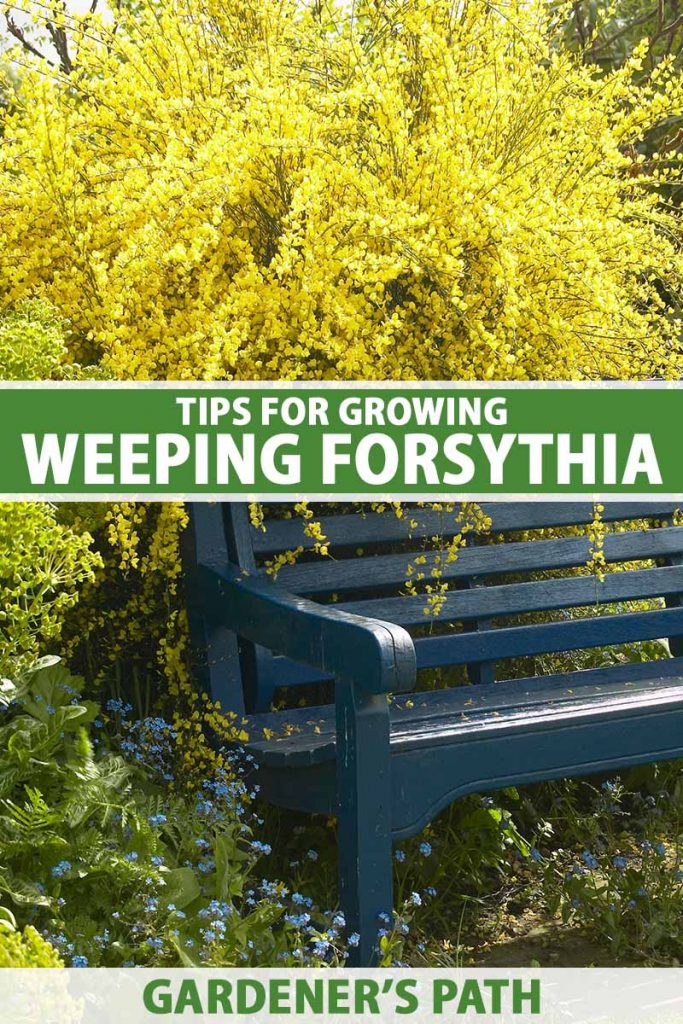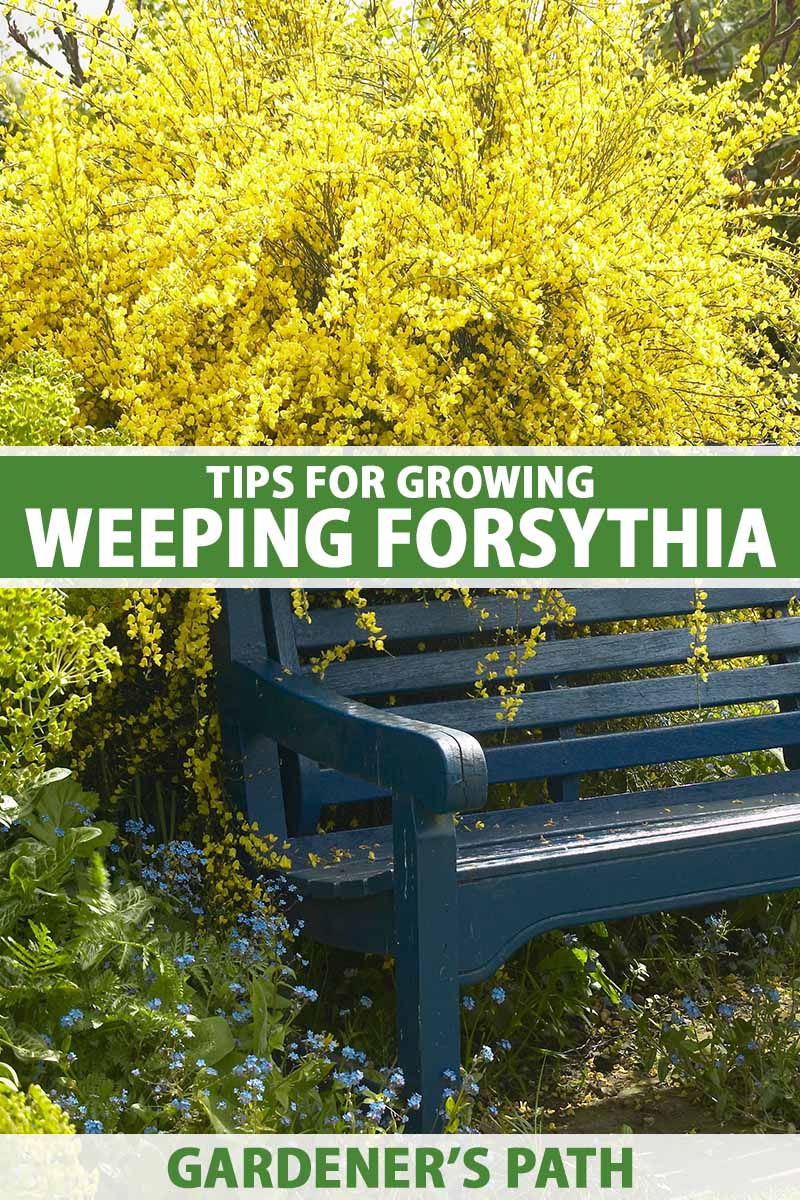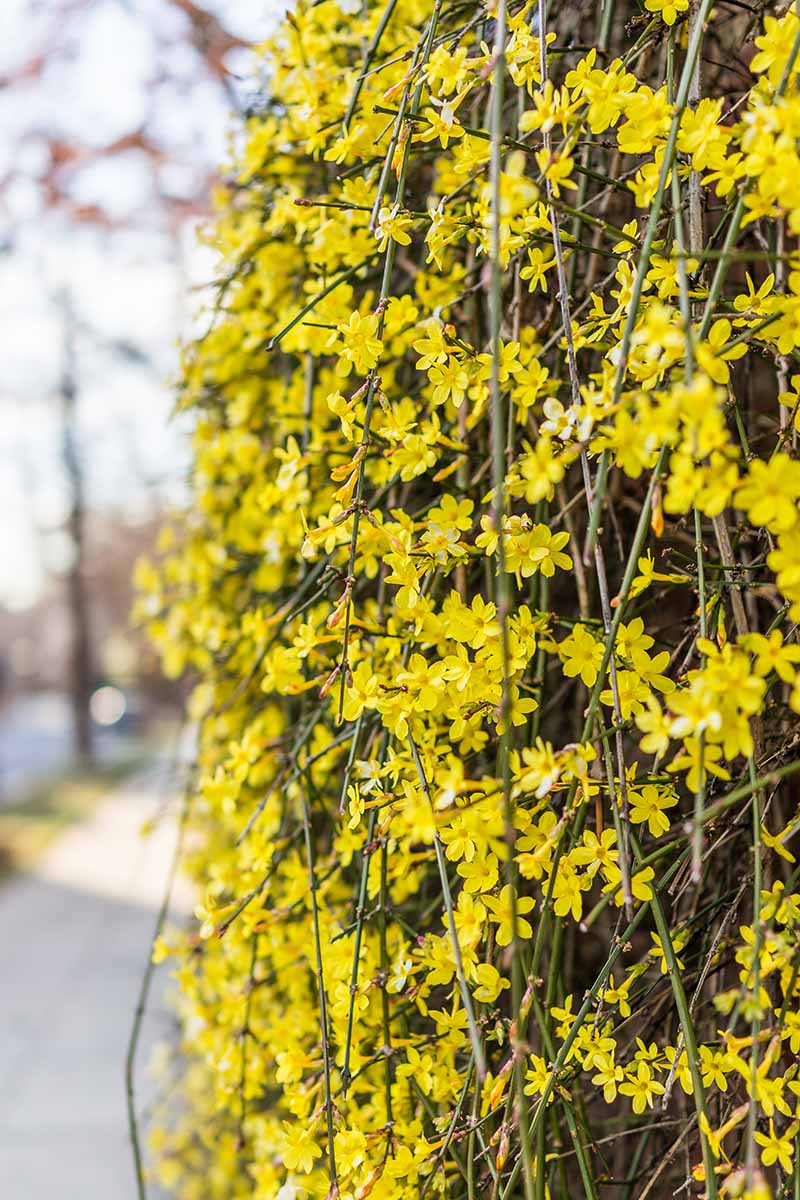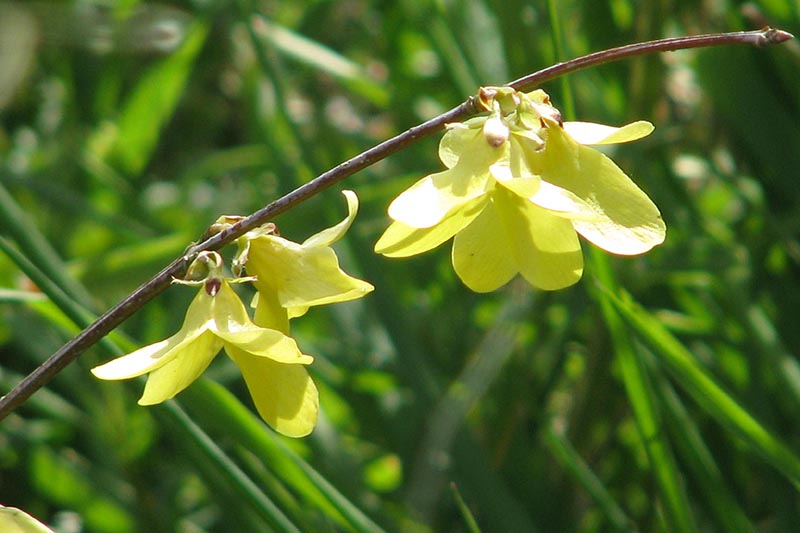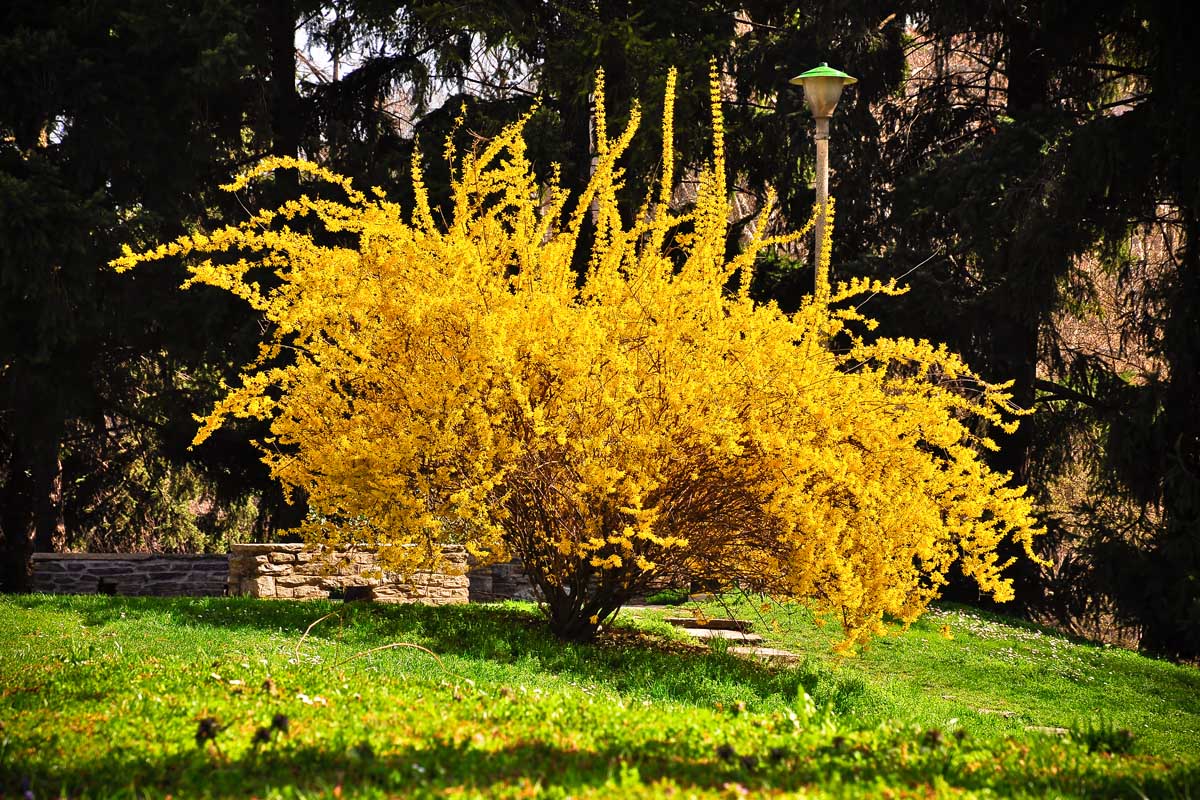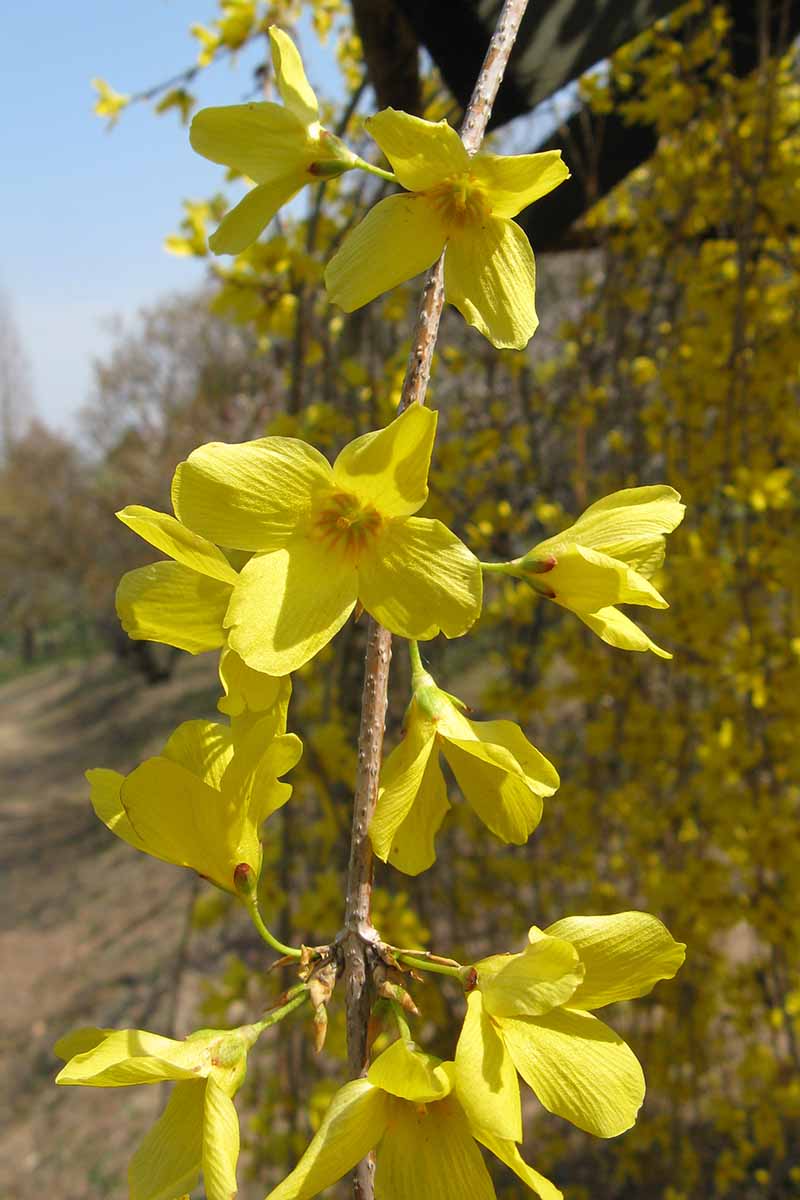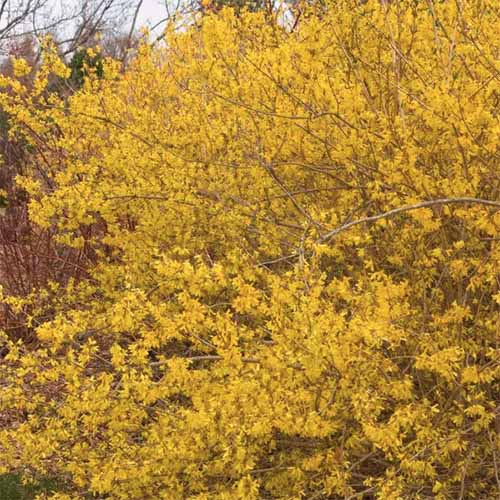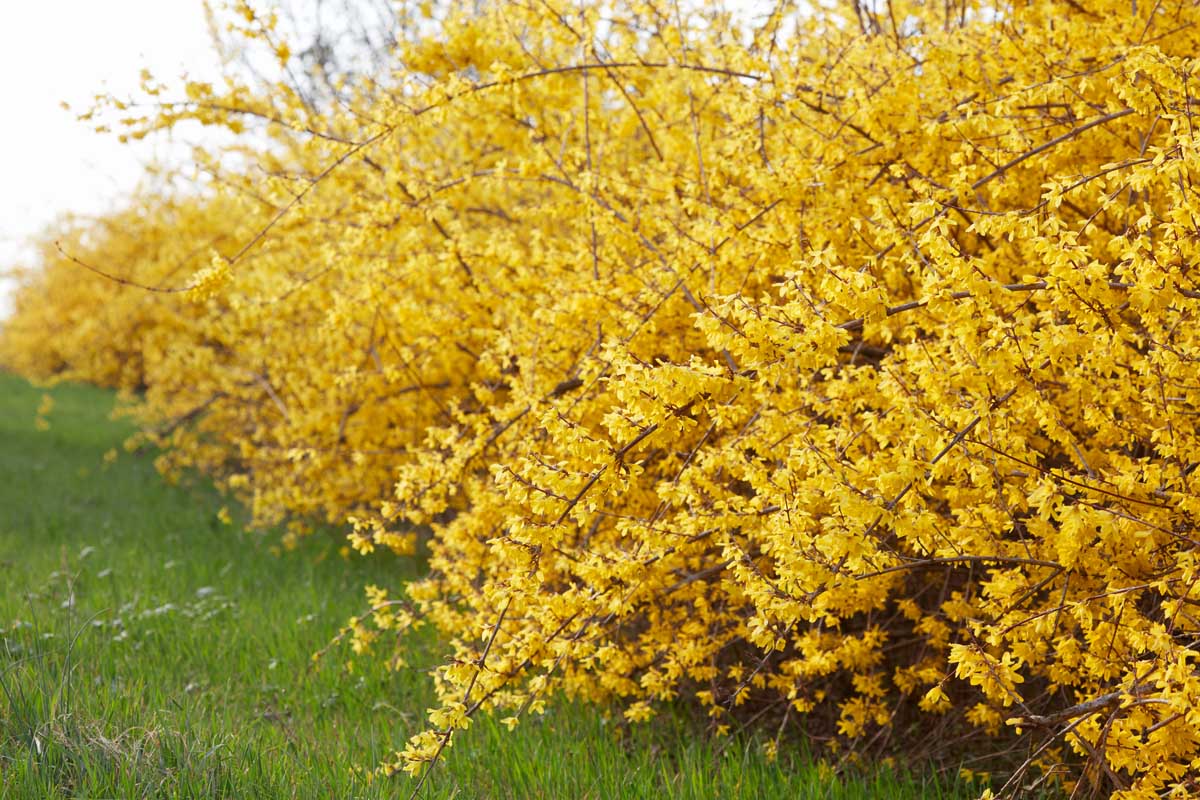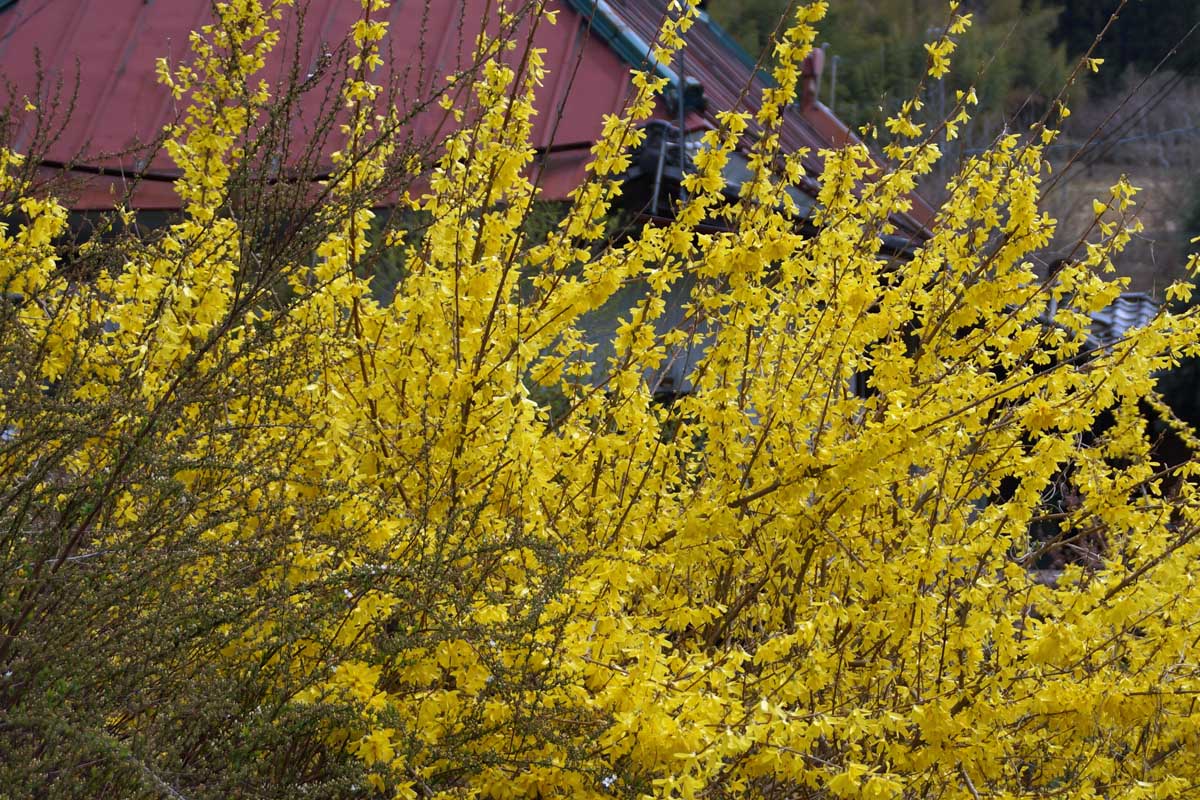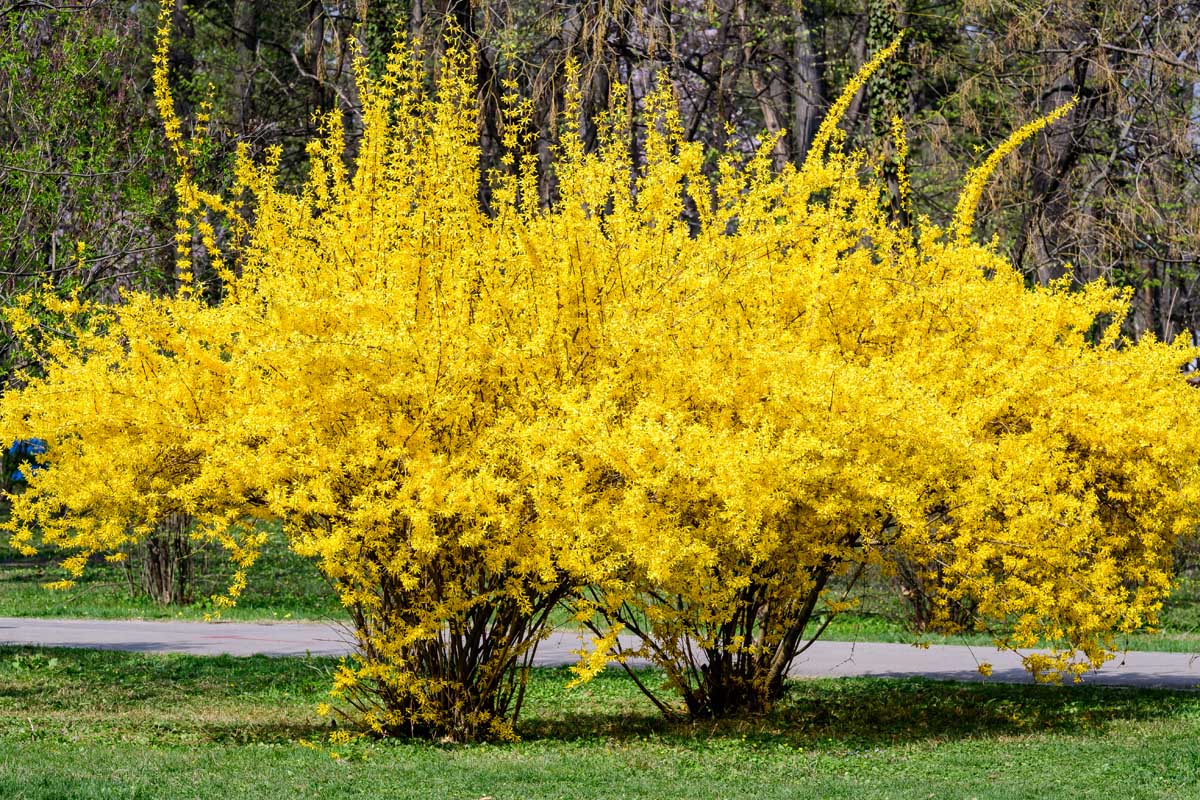Appreciated for its arching canes and yellow blossoms, this shrub generally grows to heights of six to 10 feet in USDA Hardiness Zones 5 to 8. We link to vendors to help you find relevant products. If you buy from one of our links, we may earn a commission. In our growing guide, we discuss how to cultivate and care for Forsythia, a genus that contains 11 species. This article offers tips for successfully cultivating weeping F. suspensa. Let’s get started!
What Is Weeping Forsythia?
Native to China, F. suspensa has naturalized in many parts of the US. It is named after William Forsythe, a Scottish botanist who was one of the founding members of the Royal Horticultural Society. There are several cultivated varieties of the species, including F. suspensa sieboldii and F. suspensa ‘Nyman’s.’ There is also a more upright type, F. suspensa var. fortunei.
Propagation
F. suspensa is very easy to propagate, and if left to its own devices will often do it for you via tip layering. There are five main methods which we cover in our guide to propagating forsythia. Alternatively, you can purchase bare roots or existing plants from a garden center or nursery.
How to Grow
Contrary to product write-ups that suggest the suitability of part shade locations, they do not bring out the best results in these shrubs. In addition to the likelihood of producing sparse flowers and foliage with pale coloration, the soil in shady locations may remain wet and invite unwanted fungal growth. Just because a plant can “tolerate” shade doesn’t mean it will perform as well there as it will in the sun it craves. One of the qualities that makes forsythia so easy to cultivate is that it thrives in all types of soil. However, there’s a caveat: the soil must drain well. The best way to understand the ground in your landscape is with a soil test conducted through your local agricultural extension. Learning about soil is fun, and in time, you’ll be able to make some general assessments based on its color and how it crumbles. If the soil consists of compact clay, water may run off instead of penetrating the ground to the roots. The solution is to amend it with sand and/or compost to create a loose, well-draining substrate in which roots can function optimally. In addition, if a shrub is planted too low, it may sit in a depression below ground level. If the soil is too dense there, water may pond. Prolonged poor drainage may cause root rotting. In this case, dig the shrub out and mound up the soil, amending it as needed to keep it loose. Replace the shrub, taking care to bury the roots two inches deep. Keep the crown, where the stems start, at ground level. Mounding and loosening dense soil promotes runoff in the event of oversaturation. And if you have such a location, plant on a well-draining slope that naturally promotes drainage and also inhibits soil erosion.
Growing Tips
Plant in a full sun location.Ensure soil is well draining.Provide winter protection in Zone 5.
Pruning and Maintenance
A bush with a tendency to tip root should be prevented from becoming a thicket of dense growth that raises the ambient humidity and invites fungal disease. In addition to deterring tip rooting, regular weeding is essential. Keep the area beneath a bush free of grass, weeds, and debris like twigs and leaf litter. Not only does undergrowth compete for water, it is attractive to insect pests and rodents. F. suspensa has very long canes that often trail on the ground. Contact between a growing tip and the earth often results in a proliferation of adventitious roots that anchor a cane to the ground, forming a new plant. This is an excellent way to propagate new plants that you can detach and relocate. If you don’t remove the rooted growth, you may find that your shrub “colonizes,” and you have a dense thicket instead of a stand-alone specimen shrub. In addition, you may find that such density increases the ambient humidity around the shrubs, resulting in fungal growth, as well as pest and rodent infestation. Learn more about how to prune forsythia in our guide. Weeping varieties thrive in Zones 5 to 8, but as I mentioned, while the canes can withstand winter temperatures, the flower buds may not always make it through a severe Zone 5 winter. Provide cold protection by adding two to three inches of mulch over the roots in the fall, and wrapping entire small shrubs in burlap. For larger ones, build a “wall” using a length of burlap and stakes.
Where to Buy
Deciduous early spring blooming weeping forsythia is suited to cultivation in growing zones 5 to 8. Enjoy gracefully arching branches laden with bright yellow blooms, followed by lush green foliage all season long.
Managing Pests and Disease
Weeping forsythia is a robust shrub and as such doesn’t suffer from too many pest or disease issues. Shrubs reach a mature height of 6 to 8 feet with an equal spread. Plant along property perimeters for informal privacy hedges. Find weeping forsythia, F. suspensa var. sieboldii, available from Nature Hills Nursery. It is resistant to deer, and Japanese beetles leave it alone. Slugs and snails are easy to keep at bay by providing adequate drainage, which also helps to prevent root rot. Fungal conditions such as leaf spot and twig blight may be a problem if shrubs are planted too close together and/or are too dense to allow for adequate airflow. And finally, if you notice strange growths, they may be due to a condition called forsythia gall disease.
Best Uses
To begin, there are two types of hedges: formal and informal. Formal types are pruned to specific shapes and sizes, often resulting in weak, twiggy top growth and bare “legs” with no flowers or foliage. Informal ones consist of shrubs planted in proximity that are not manicured, but instead are left to take their natural shape and reach the maximum dimensions for their type. Why sacrifice the artful, cascading canes of weeping forsythia to a high-maintenance, manicured design when there are the more upright F. suspensa var. fortunei and plenty of compact border cultivars available? Use weeping varieties in informal groupings for a naturalistic, loose arrangement that showcases the species’ attractive curving lines. Unlike the erect stems of border forsythia, those of weeping cultivars are erect at first, and then they bend and cascade downward. They afford the opportunity to plant a bush on an upper level of the garden, and have the canes spill down over a retaining wall to a lower level. In addition, with support, the flexible stems can be arranged and secured with vine tie bands to encourage them to grow upward over a structure, like a trellis.
Quick Reference Growing Guide
Whether laden with yellow blossoms in springtime, or lush green foliage all summer long, they’ll prove to be a long-lived garden asset you’ll enjoy for years to come. As you plant a new shrub or maintain a current one, remember to skip the formal pruning, provide plenty of sunshine, manage those feisty tips, protect it from winter’s worst, try cultivating it like a vine, and keep the weeds away for best success. Are you growing one of these lovely shrubs in your garden? Let us know in the comments section below! We hope you’ve found these tips useful. Read these articles next to expand your knowledge of growing forsythia:
7 Reasons Why Forsythia May Not Bloom11 of the Best Forsythia Varieties for Glorious Spring Color5 Reasons to Rejuvenate Forsythia with Hard Pruning
